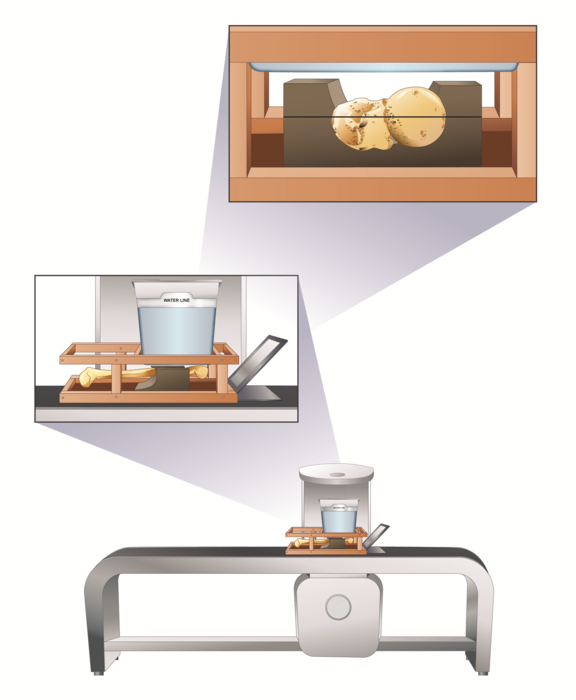In medieval Norway, high status individuals tended to be taller and to have stronger bones, possibly as a result of a favorable lifestyle, according to a study published October 19, 2022 in the open-access journal PLOS ONE by Elin Brødholt of the University of Oslo and colleagues.
Throughout modern history, socioeconomic status has been linked to health and longevity, a relationship that can potentially be detected even in the skeletal remains of past cultures. Medieval Norway was a period characterized by notable levels of social stratification and poverty and is therefore a valuable case study in identifying correlations between social status and individual health.
The authors examined the remains of 227 individuals from five burial sites spanning the 11th through 16th centuries AD. Two of the sites, a royal church and a Dominican monastery, yielded the remains of high-status individuals, while the other three sites represented parish populations. For each individual, the researchers measured patterns of bone mineral density as well as stature and found significant skeletal differences between the socioeconomic groups.
In general, high-status individuals were taller and had higher bone mineral density compared with the parish populations. This pattern likely reflects differences in nutrition, activity level, and susceptibility to disease brought on by differing lifestyles between high-class and low-class individuals. These results were also influenced by other factors. For example, women showed more marked differences in skeletal traits between the socioeconomic groups as compared to men, possibly indicating that women in medieval Norway experienced a particularly high degree of lifestyle differences influenced by social class. These data are valuable in understanding the complex ways in which socioeconomic status has influenced health over the centuries.

Credit: Elin T. Brødholt, CC-BY 4.0 (https://creativecommons.org/licenses/by/4.0/)
In medieval Norway, high status individuals tended to be taller and to have stronger bones, possibly as a result of a favorable lifestyle, according to a study published October 19, 2022 in the open-access journal PLOS ONE by Elin Brødholt of the University of Oslo and colleagues.
Throughout modern history, socioeconomic status has been linked to health and longevity, a relationship that can potentially be detected even in the skeletal remains of past cultures. Medieval Norway was a period characterized by notable levels of social stratification and poverty and is therefore a valuable case study in identifying correlations between social status and individual health.
The authors examined the remains of 227 individuals from five burial sites spanning the 11th through 16th centuries AD. Two of the sites, a royal church and a Dominican monastery, yielded the remains of high-status individuals, while the other three sites represented parish populations. For each individual, the researchers measured patterns of bone mineral density as well as stature and found significant skeletal differences between the socioeconomic groups.
In general, high-status individuals were taller and had higher bone mineral density compared with the parish populations. This pattern likely reflects differences in nutrition, activity level, and susceptibility to disease brought on by differing lifestyles between high-class and low-class individuals. These results were also influenced by other factors. For example, women showed more marked differences in skeletal traits between the socioeconomic groups as compared to men, possibly indicating that women in medieval Norway experienced a particularly high degree of lifestyle differences influenced by social class. These data are valuable in understanding the complex ways in which socioeconomic status has influenced health over the centuries.
The authors add: “Bone mineral density (BMD) has varied notably between archaeological populations and time periods in Scandinavia, and these exciting results demonstrate the effect of social inequality on skeletal BMD. By combining DXA-scanning and osteological analysis, we were able to elucidate new facts about life according to socioeconomic status in the medieval society of Norway.”
#####
In your coverage please use this URL to provide access to the freely available article in PLOS ONE: https://journals.plos.org/plosone/article?id=10.1371/journal.pone.0275448
Citation: Brødholt ET, Gautvik KM, Günther C-C, Sjøvold T, Holck P (2022) Social stratification reflected in bone mineral density and stature: Spectral imaging and osteoarchaeological findings from medieval Norway. PLoS ONE 17(10): e0275448. https://doi.org/10.1371/journal.pone.0275448
Author Countries: Norway, Sweden
Funding: The authors received no specific funding for this work.
Journal
PLoS ONE
DOI
10.1371/journal.pone.0275448
Method of Research
Observational study
Subject of Research
People
Article Title
Social stratification reflected in bone mineral density and stature: Spectral imaging and osteoarchaeological findings from medieval Norway
Article Publication Date
19-Oct-2022
COI Statement
The authors have declared that no competing interests exist.




